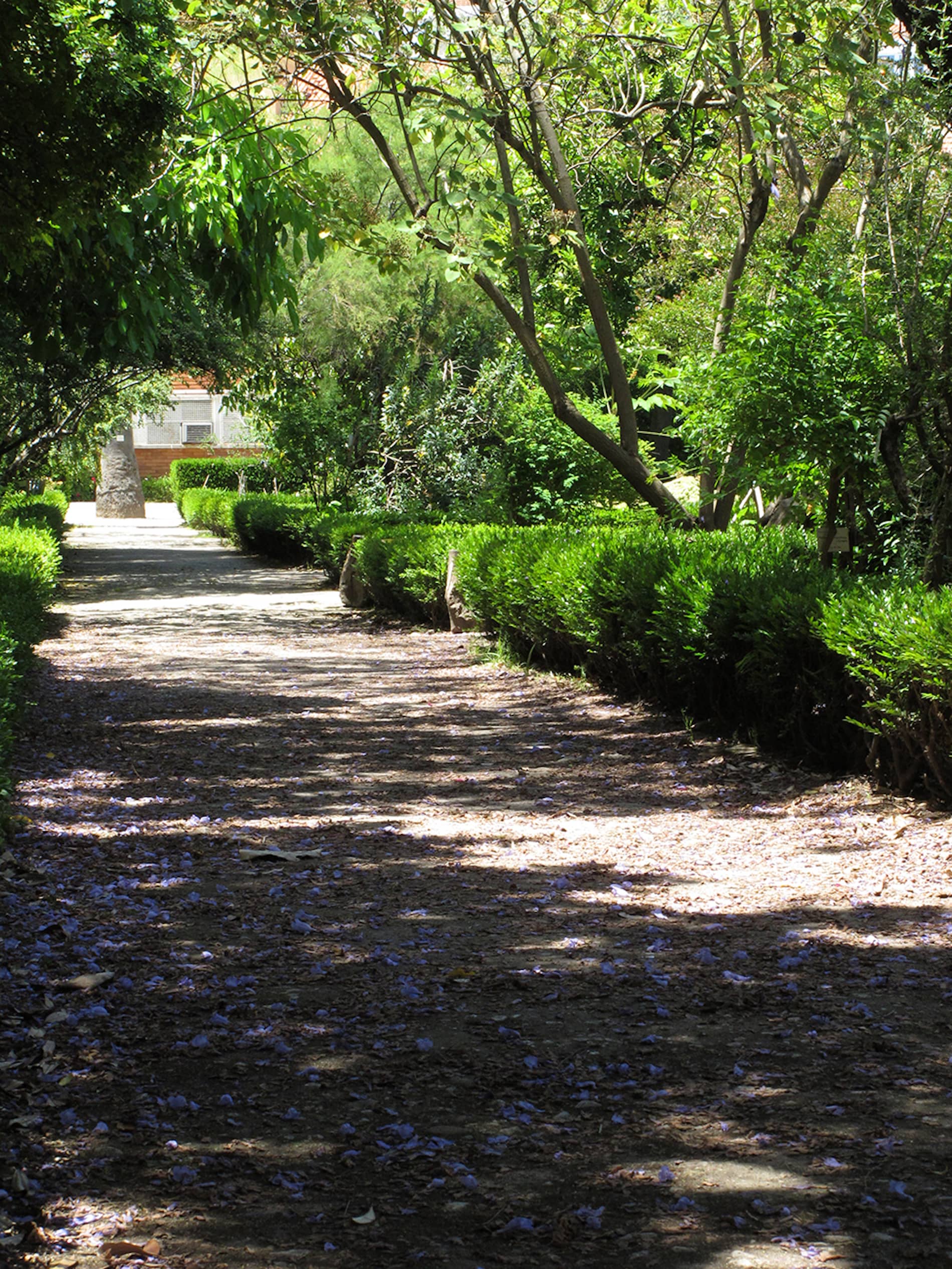














The University Botanical Garden
An avenue of tall Mexican Fan Palms (Washingtonia robusta), reminiscent of the Caribbean coast, beckons travelers to enter and lose themselves in the jungle of this garden, nicknamed “O Botânico”.
The garden is made up of two distinct sections: a flat area with a formal garden accessed from the avenue of palm trees, and a larger and lower second area to the south in the style of an arboretum which follows the natural descending slope of the land.
The higher section, or terrace, features winding paths flanked by boxwoods with shrubs and herbs within the parterres, and in the central area, a large circular pool from which a fountain shoots a fine mist. The water, the shade and the flowers in this garden create a romantic and charming atmosphere. This part of the garden was created from plants inherited from the Botanical Garden of Ajuda and it was the person in charge of that garden, Antonio Ricardo da Cunha, who created this one in 1873. In addition to the plants from the Ajuda Garden, the collection has benefitted from species imported from the Jardin des Plantes in Paris, the gardens of the Dukes of Palmela and the garden of Dr. José do Canto on São Miguel Island in the Azores.
The parterre is surrounded by the buildings of the Meteorological and Astronomical Observatories, the Museums of Science and Natural History and by a large greenhouse of interest for its architecture.
The tree collection on the lower level is the work of Jules A. Daveau who began replacing the fruit trees on this site in 1876. Of particular note among the dense foliage are the palm trees and species from America, New Zealand and South Africa, such as the Montezuma Cypress (Taxodium mucronatum), the Pōhutukawa Tree (Metrosideros excelsa) and the Coast Coral Tree (Erytrina caffra). Noteworthy also is the collection of Cycadaceae and the play of water in the brooks, streams and pools.
Like many of the gardens in Lisbon with commanding views of the city and the Tagus, the upper terrace looks out on the hills and the Avenida da Liberdade


